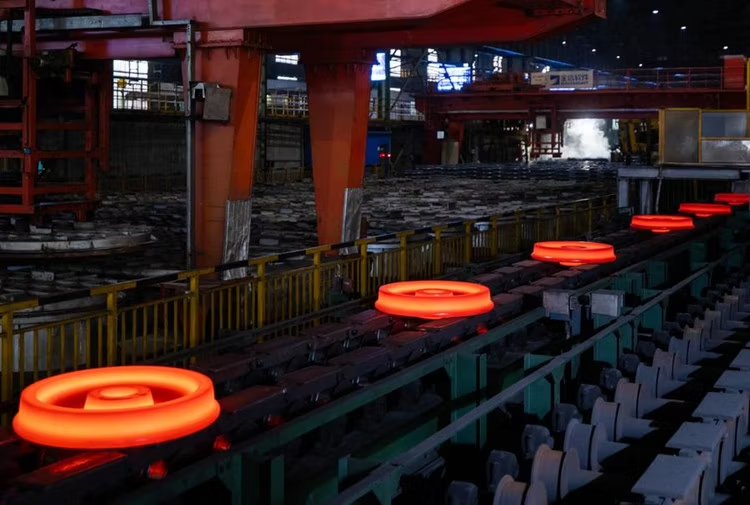Kingrail Parts is a professional rail wheel factory in China. We are committed to providing the highest quality railway wheels according to customers' specifications and requirements, in line with demanding international standards.
The rail wheels produced by Kingrail Parts are guaranteed by the quality management system ISO 9001 and have passed TSI, DB, AAR and other certifications. All types of rolling stock produce forged and rolled railway wheels that meet international standards.
Definition:
Rail wheels are an important part of railway locomotives. It guides the railway locomotive forward and bears the weight of the railway locomotive. With the increase of train speed and axle load, rail wheels have the characteristics of high hardness, strong wear resistance, good noise reduction, and good elasticity.
Application:
Flange wheels and rail wheels are specially designed for industrial, mining or railway vehicles running on tracks. These wheels are mainly used in cranes, transfer vehicles, trains, bogies, excavators, etc.

Rail Wheel specifications:
Process: Forged and cast wheels
Size: diameter from 0 to ≤1450mm
Material: cast steel, 60#, 65#, 65Mn, 42CrMoA, etc.
Standards: AAR M-107, UIC 811-1, EN13261, GOST 31334, IRIS 16/95, KSR 9220, BS 5892, JIS E4502, TB/T 2945 and other international standards
Inspection: chemical analysis, metallography, mechanical analysis, ultrasonic testing, magnetic testing, impact testing, hardness testing, surface quality and size report
Types of Rail Wheels:
1. Single flange rail wheels
Single flange wheels are ideal for a variety of heavy commercial and industrial rail vehicles, usually used in forestry, factories, mining and offshore loading industries. Wheels can be used for driven wheels or fixed wheels, and can be processed to meet specific track sizes.
2. Double flange rail wheels
Double flange wheels can ensure the best safety and maneuverability in places with common heavy loads, high impacts or uneven loads. Double flange wheels are very suitable for wood kilns, material transportation vehicles, offshore rails, cranes, and factory or mining vehicles.
3.Flat-faced rail wheels
In some difficult applications, there are differences in track gauges, and a more forgiving design is required. For this reason, double-flanged wheels are usually used on one side, and flat treads are used on the other side without flanges, allowing the car to have more lateral movement.
The manufacturing process of Rail Wheels:
1. Wheel steel melting 2. Round billet sawing 3. Heating 4. Phosphorus 5. Stamping and forming 6. Rolling 7. Bending punch 8. Hot stamping 9. Laser measurement 10. Blanking pile 11. Rough machining 12. Quenching 13. Tempering 14. Sampling 15. Pretreatment 16. Finishing 16. Cold layout 17. Static balance 18. Cold version 19. Hardness test 20. Ultrasonic test 21. Magnetic particle test 22. Shot blasting 23. Spray paint packaging
Contact Us
Please contact us for more information and a quote.


Inquiry Now